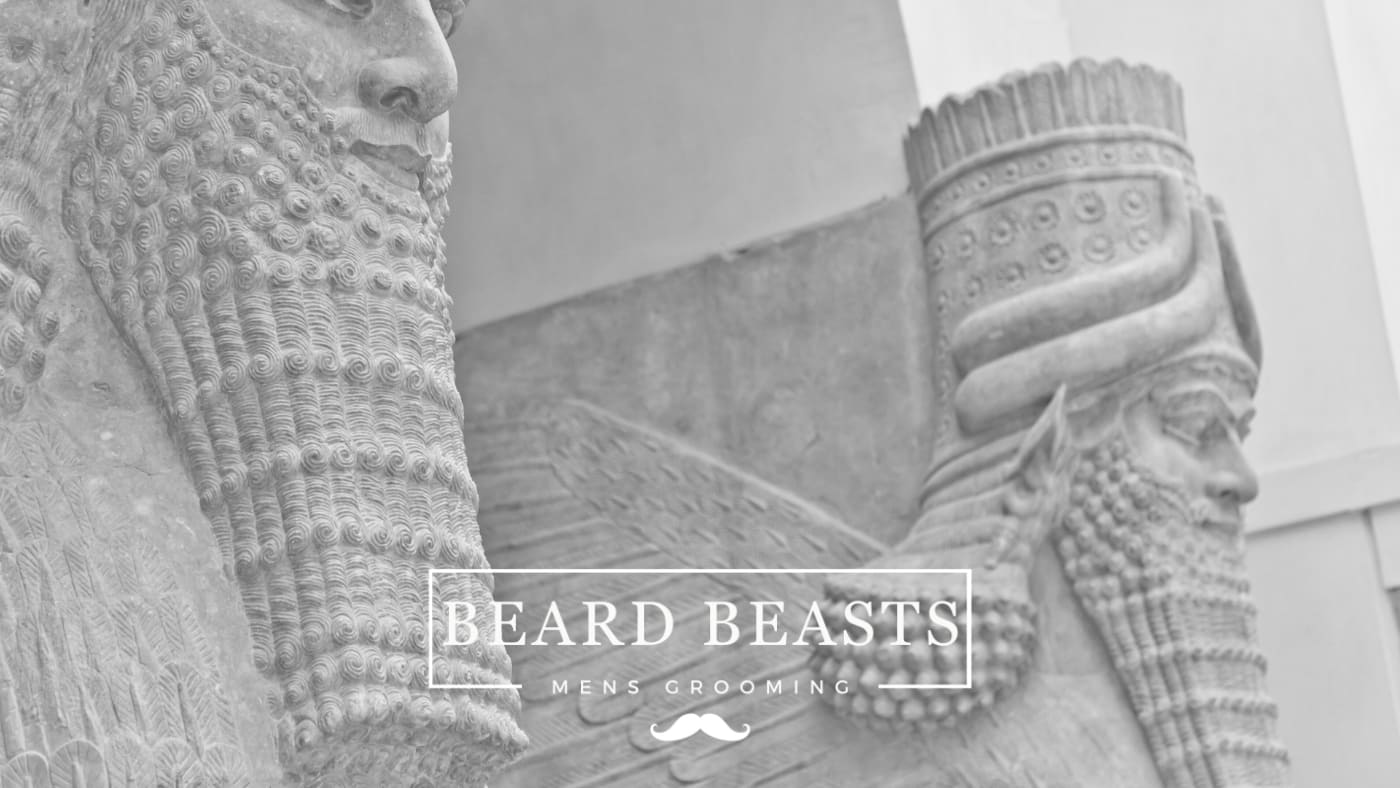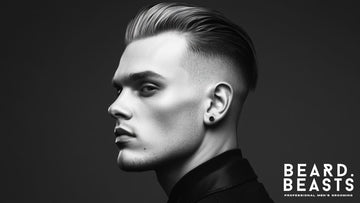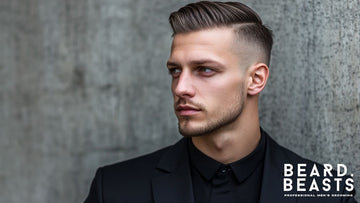History Of The Beard
Welcome to a journey through time and culture as we explore the captivating history of the beard. From ancient civilizations to modern-day subcultures, facial hair has played a significant role in shaping human identity, expression, and perception.
Join us as we delve into the origins and evolution of the beard, tracing its path through the annals of history and uncovering its diverse meanings and interpretations. From religious symbolism to fashion trends, the beard has been both a reflection of society and a catalyst for cultural change.
In this article, we'll explore the cultural tapestry of the beard, examining its portrayal in art, literature, and religious practices. We'll also delve into the societal perceptions and psychological insights surrounding facial hair, shedding light on how beards influence personal identity and professional dynamics.
From the bustling streets of ancient civilizations to the vibrant festivals celebrating beard culture around the world, the history of the beard is a rich and multifaceted story waiting to be discovered. So, grab your grooming kit and join us as we embark on this fascinating journey through the history of the beard.
Origins of Beard Growth: Unraveling the Roots

When we delve into the history of the beard, it's fascinating to uncover the biological reasons behind beard growth in humans. From an evolutionary standpoint, beards have been more than just facial hair.
They've served as a symbol of dominance, a way to protect the face from extreme weather, and even as a method to enhance one's appearance, signaling maturity and health to potential partners.
This rich beard history shows how our ancestors viewed and utilized beards as tools for social and environmental adaptation.
How Early Humans Perceived and Utilized Beards
Early humans' perception of beards was deeply intertwined with survival and social status. A thick beard was often seen as a sign of wisdom, strength, and virility.
In many cultures, beards were associated with the lion's mane, symbolizing power and authority. This view of beards as a mark of distinction and leadership played a crucial role in how early societies were structured and how individuals interacted within them.
The First Shavers
The practice of shaving or grooming beards dates back thousands of years, indicating the importance of beard history in human culture. The first shavers used tools made from flint, shells, or even shark teeth to trim or remove their facial hair.
This early grooming was not just about aesthetics; it also had practical purposes, such as reducing the risk of frostbite in cold climates or minimizing the chances of an enemy grabbing one's beard in combat.
Archaeological Evidence of Early Beard Grooming Practices
Archaeological finds have provided valuable insights into the early practices of beard grooming. From the discovery of ancient razors in Mesopotamia to Egyptian tombs with grooming tools, these artifacts highlight the global and historical significance of beards.
Such evidence reveals the sophisticated methods our ancestors developed to maintain their beards, underscoring the beard's enduring place in human history and culture.
In exploring the origins of beard growth, we see how beards have been much more than mere facial hair across the ages. They've been symbols of status, tools for protection, and even signs of beauty.
This journey through the history of the beard not only enriches our understanding of past civilizations but also offers intriguing insights into the natural and social forces that have shaped human evolution.
Beards Through the Ages: A Cultural Tapestry
The history of the beard takes us back to ancient civilizations, where facial hair held deep symbolic meanings. In ancient Egypt, beards were often associated with godliness; pharaohs wore false beards during rituals to signify their divine status.
Meanwhile, in ancient Greece, beards symbolized wisdom and virility, with many philosophers proudly sporting facial hair as a mark of their intellect and maturity.
In contrast, ancient Rome saw a fluctuation in beard popularity.While the early Republic era valued clean-shaven faces as a sign of civility, the later periods admired beards as symbols of wisdom and authority.
The Middle Ages to the Renaissance
During the Middle Ages, the beard's status varied significantly across Europe. Beards were common among the nobility and common folk alike, often seen as a sign of masculinity and strength.
However, as the Renaissance dawned, preferences shifted towards more groomed and styled facial hair, reflecting the era's growing interest in personal aesthetics and art.
This period saw the beard becoming a canvas for expression among the European elite, with various styles reflecting one's status, profession, or artistic inclination.
The Age of Enlightenment
The Age of Enlightenment brought a new perspective to the history of the beard, linking it with intellectual movements. Philosophers and scholars of the time often wore beards as symbols of wisdom and a rejection of superficiality.
This era celebrated the pursuit of knowledge over the pursuit of fashion, leading to a more widespread acceptance of beards among the educated and the literate.
The 19th Century to World War Era
The 19th century saw significant shifts in beard popularity due to industrialization and the advent of war. The early industrial era favored clean-shaven looks, as beards were deemed impractical in factory settings and indicative of a lack of cleanliness.
However, the World War periods saw a resurgence of beards among soldiers, symbolizing ruggedness and resilience in the face of adversity. This era highlighted how economic, social, and political forces could dramatically influence beard trends.
Throughout these periods, the history of the beard has woven a complex tapestry that reflects the changing values, beliefs, and circumstances of societies. From ancient civilizations to the tumultuous times of war, beards have served as powerful symbols of divinity, wisdom, masculinity, and resilience.
This journey through beard history not only sheds light on the cultural significance of facial hair but also offers a unique lens through which to view our shared past.
Religious and Philosophical Significance
The history of the beard is deeply entwined with religious practices and beliefs, serving as a symbol of faith and devotion across many faiths. In Christianity, particularly among Eastern Orthodox and some Catholic clergy, beards are often worn as a sign of piety and a reflection of Jesus Christ's appearance.
Islam holds the beard in high regard, viewing it as a mark of manliness and morality; the Prophet Muhammad's own beard is emulated by Muslim men as a sign of their faith.
Sikhism mandates the uncut hair, including beards, as a sign of respect for the perfection of God's creation, symbolizing commitment and discipline among its followers.
Judaism also places significance on beards, with many interpreting Levitical laws as prohibitions against shaving, thus making beards a symbol of obedience to God.
Philosophical Connotations
Beyond religious contexts, beards carry philosophical meanings, often representing wisdom and virility. Ancient Greek philosophers, such as Socrates and Plato, famously sported beards, which were seen as external manifestations of their inner wisdom and contemplative lives.
In many philosophical texts, beards are synonymous with a life dedicated to the pursuit of knowledge, signifying the philosopher's disdain for superficial appearances in favor of deeper truths.
This association between beards and wisdom has permeated cultural consciousness, often depicting scholars, thinkers, and wise men with prominent beards to symbolize their intellectual prowess and life experience.
The religious and philosophical significance of beards underscores their importance not just as a physical trait but as a symbol carrying deep meanings.
Throughout the history of the beard, these symbols have reflected the values, beliefs, and aspirations of societies and individuals, linking the external appearance of beards with the internal qualities of wisdom, faith, and virtue.
This multifaceted significance enriches our understanding of beards, making them more than just a style or trend but a profound expression of human identity and belief.
Fashion and Trends: The Evolution of Beard Styles
The history of the beard is as much a reflection of fashion and trends as it is of cultural and religious significance. Over the centuries, economic, political, and social factors have all played pivotal roles in shaping beard styles.
For instance, during times of war or economic hardship, beards were often seen as practical, minimizing the need for scarce resources like razors or grooming products.
Conversely, during periods of prosperity and peace, elaborate beard styles could symbolize wealth and status. Political movements, too, have influenced beard trends, with leaders often setting fashion precedents for their followers.
The 20th Century: A Bare-Faced Era
The 20th century marked a significant shift towards a bare-faced aesthetic, particularly in the West. The advent of the safety razor made clean-shaven faces more accessible, while global conflicts and the demands of industrial work environments favored practicality over style.
However, the latter half of the century saw a gradual resurgence of facial hair, as countercultural movements embraced beards as symbols of rebellion against societal norms.
This ebb and flow highlighted the ever-changing perceptions of masculinity and personal expression.
The 21st Century Beard Renaissance
The 21st century has witnessed a remarkable beard renaissance, with beards becoming increasingly popular across diverse demographics. This resurgence can be attributed to several factors, including the influence of celebrities and social media, where beards are often associated with a rugged, masculine aesthetic.
Additionally, the rise of the hipster culture has celebrated individuality and traditional grooming practices, further popularizing beards. The availability of specialized beard care products has also made it easier for men to grow and maintain their facial hair, contributing to the beard's modern-day appeal.
The evolution of beard styles through history reflects not only changing fashion trends but also the broader socio-economic and political landscapes. From symbols of wisdom and piety to expressions of individuality and style, beards continue to hold a significant place in society.
The current beard renaissance underscores a renewed appreciation for the beard's aesthetic and cultural dimensions, making the history of the beard as dynamic and varied as the styles it encompasses.
Iconic Beards in History and Culture
Throughout the history of the beard, numerous figures have become iconic for their facial hair, influencing generations and symbolizing various cultural ideals.
Historical leaders like Abraham Lincoln are renowned for their distinctive beards, which have become integral to their public image and legacy. Lincoln's beard, in particular, conveyed wisdom and authority during a tumultuous period in
American history. In more recent times, celebrities such as Sean Connery and Jeff Bridges have been celebrated for their distinguished beards, showcasing the versatility and appeal of facial hair in modern culture.
Beards in Art and Literature
Beards have also played a significant role in art and literature, where they've been depicted and romanticized across various mediums. In classical paintings, bearded figures often represent wisdom and strength, drawing on religious and mythological themes where gods and heroes sport majestic beards.
Literature, too, has used beards to denote character traits such as ruggedness, wisdom, or eccentricity. From the wise wizards of fantasy novels to the stern fathers in classic literature, beards add depth and identity to characters, making them memorable and impactful.
The portrayal of beards in history and culture highlights their symbolic power, transcending mere fashion to embody ideals of masculinity, wisdom, and strength.
Iconic beards serve as reminders of the individuals who've left a mark on society, whether through leadership, creativity, or rebellion against the norm. As such, the history of the beard is a rich tapestry, interwoven with the stories of notable figures and their lasting influence on art, literature, and popular culture.
The Modern Beard: Culture and Subcultures
The hipster movement has played a pivotal role in the resurgence of the beard in contemporary culture, transforming facial hair into a symbol of non-conformity, individuality, and a nostalgia for traditional masculinity.
Within this subculture, beards are not just about appearance; they represent a lifestyle choice and a rejection of mainstream values. This affinity for beards among hipsters has sparked a broader acceptance and revival of facial hair in society, making beards a common sight in urban settings around the world.
The movement has contributed significantly to the narrative of the history of the beard, showcasing how subcultures can influence mainstream fashion and grooming trends.
Beard Grooming in the 21st Century
As beards have grown in popularity, so has the market for beard care products and grooming techniques. The 21st century has seen an explosion of products designed to maintain, style, and nourish facial hair, from specialized beard wash and oils to balms and waxes.
This proliferation of grooming products reflects a greater societal acceptance of beards and a desire among men to present their facial hair in the best possible condition. Moreover, the rise of social media and online tutorials has made it easier than ever for individuals to learn about beard care and styling, further cementing the beard's place in modern culture.
The modern beard, with its deep roots in culture and subcultures like the hipster movement, represents more than just a fashion statement; it is a form of self-expression and identity.
The history of the beard continues to evolve, influenced by changing trends, technologies, and societal attitudes. As grooming practices advance and cultural perceptions shift, the beard remains a significant and dynamic element of personal and social identity, reflecting the ongoing dialogue between tradition and modernity.





